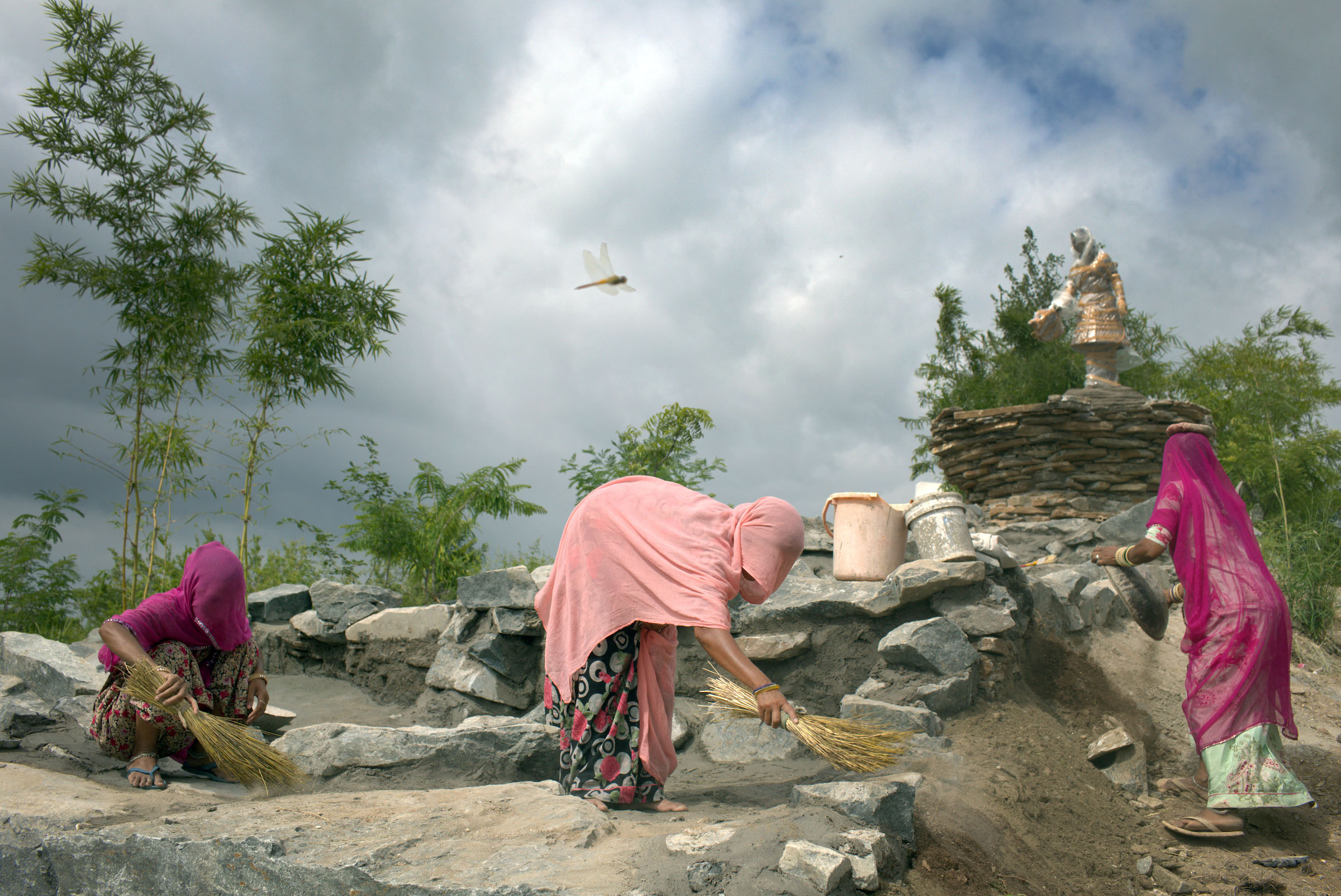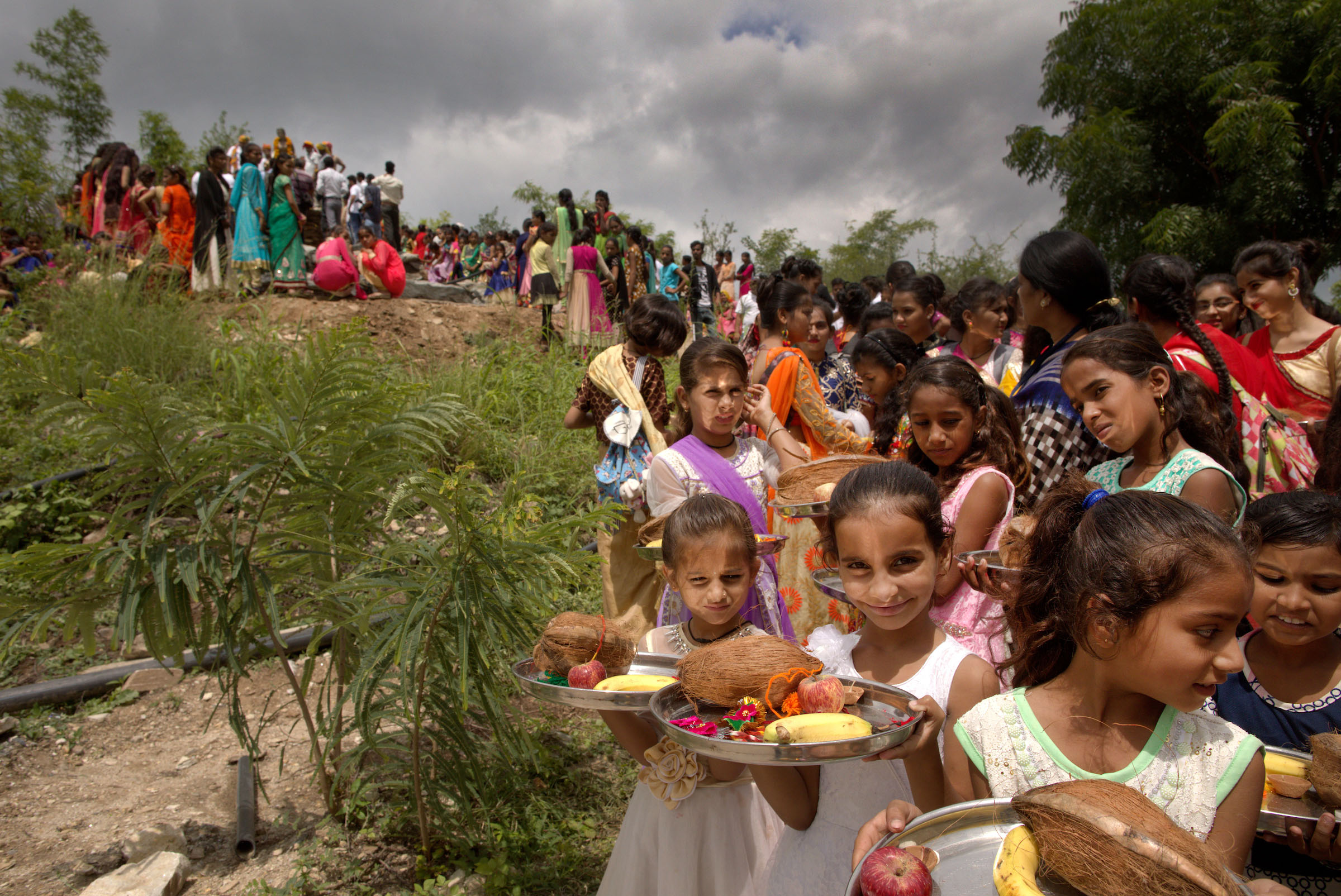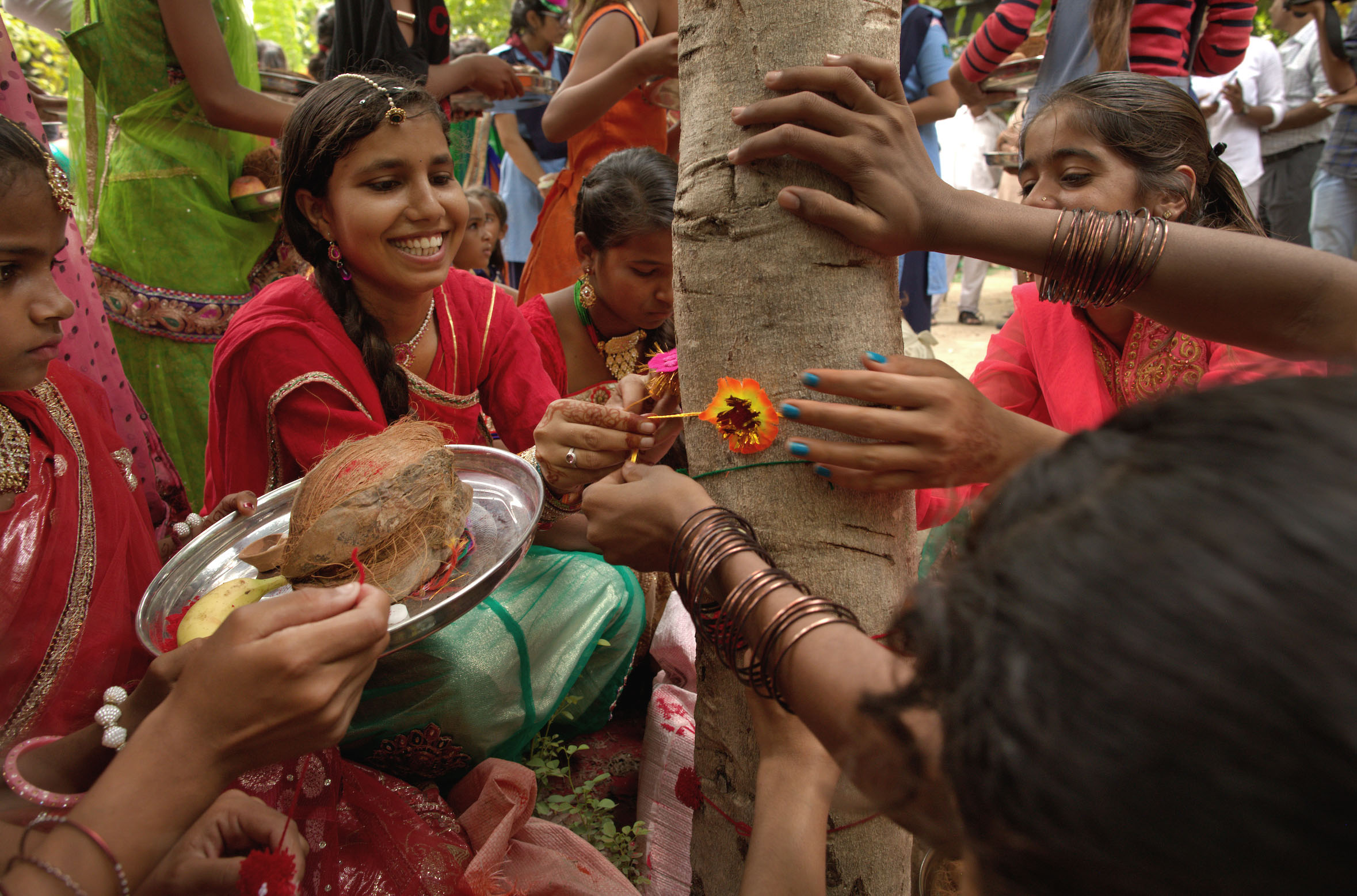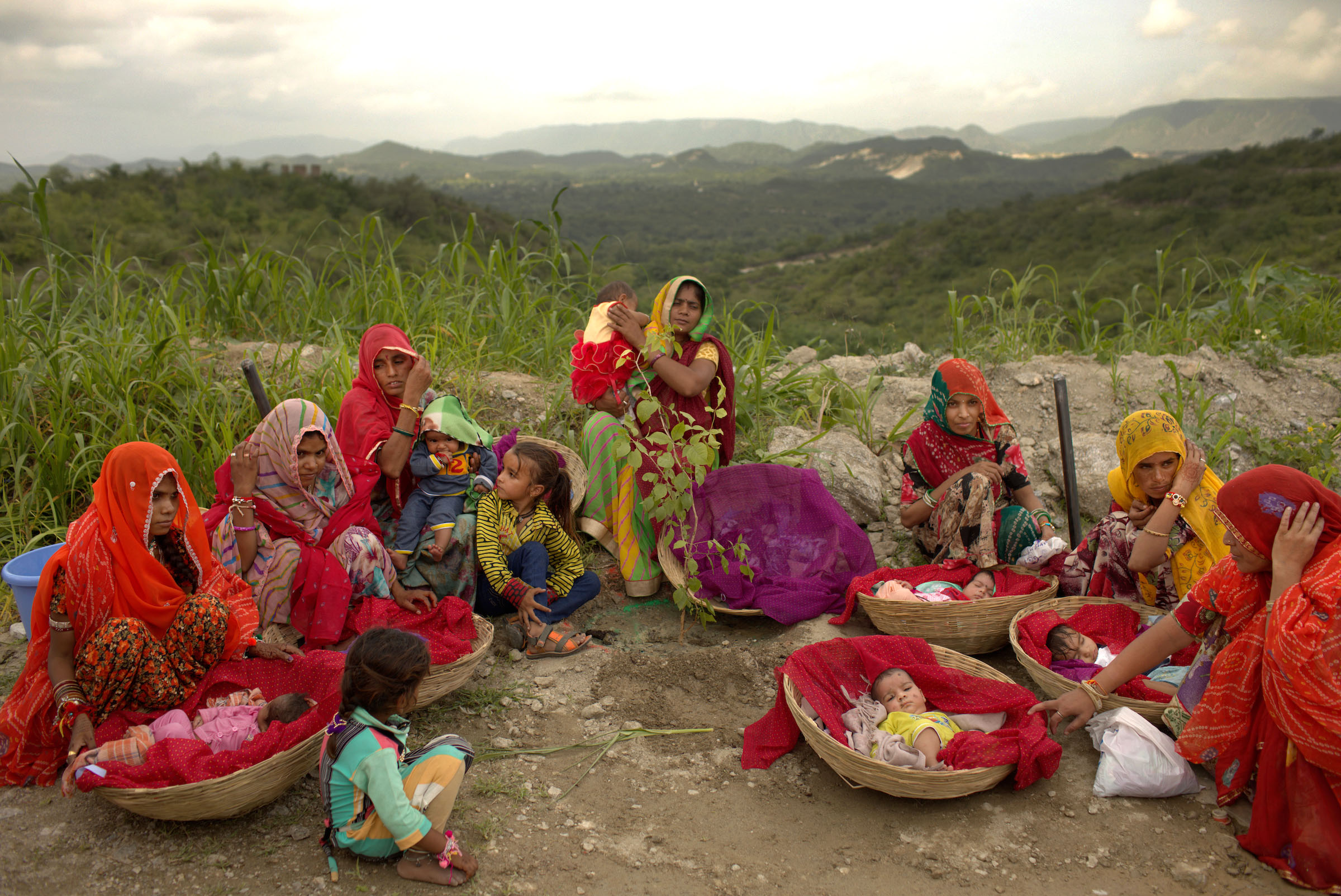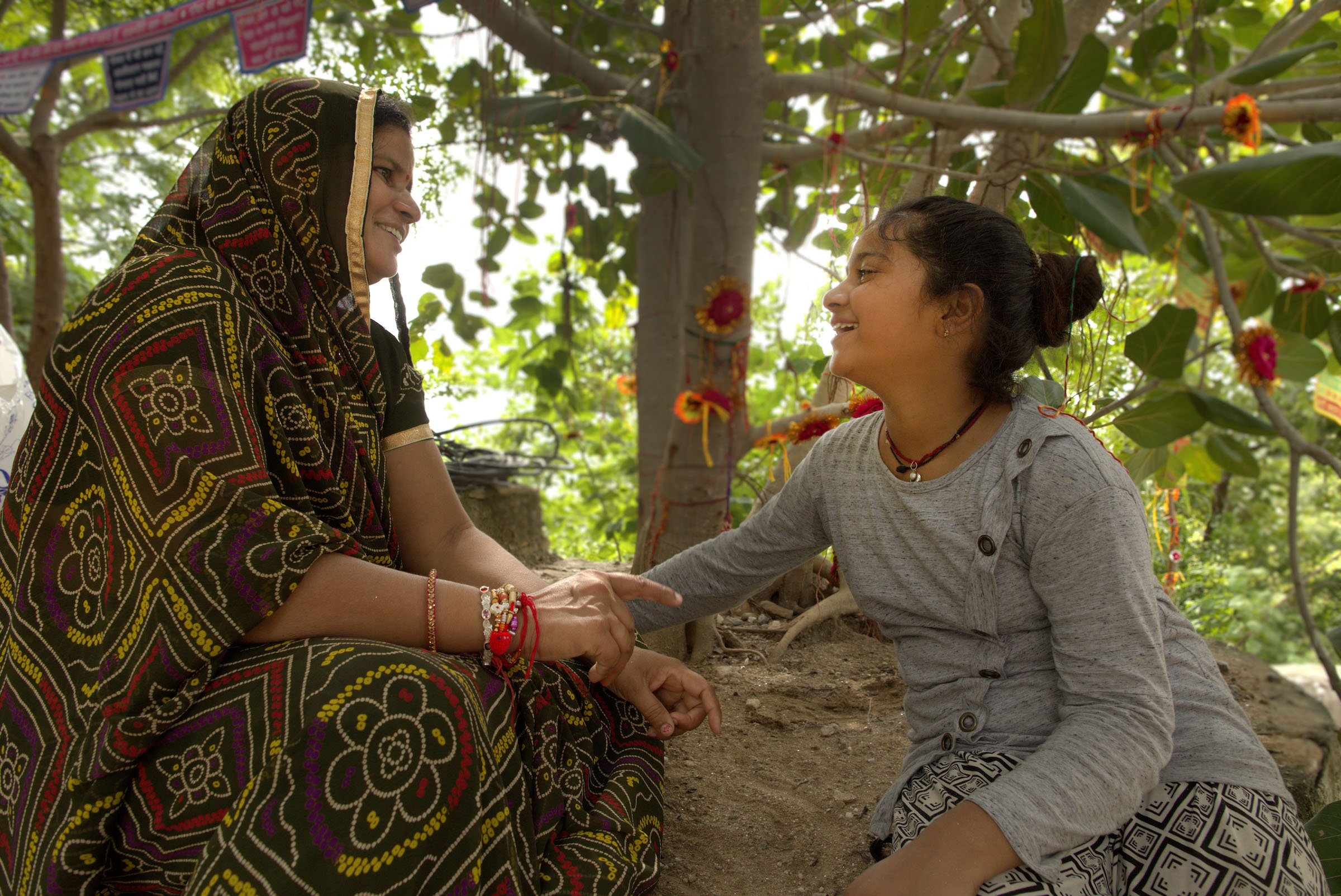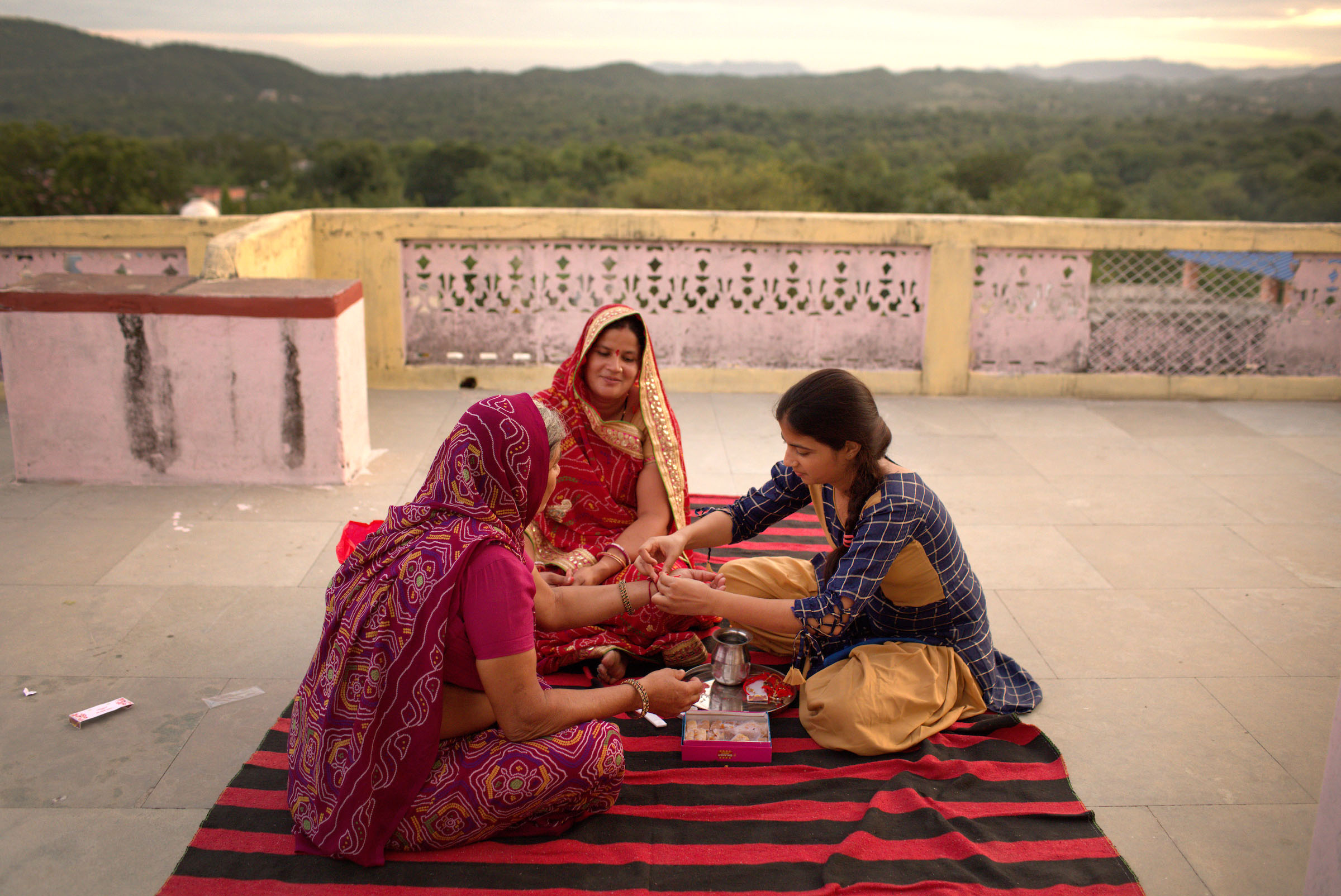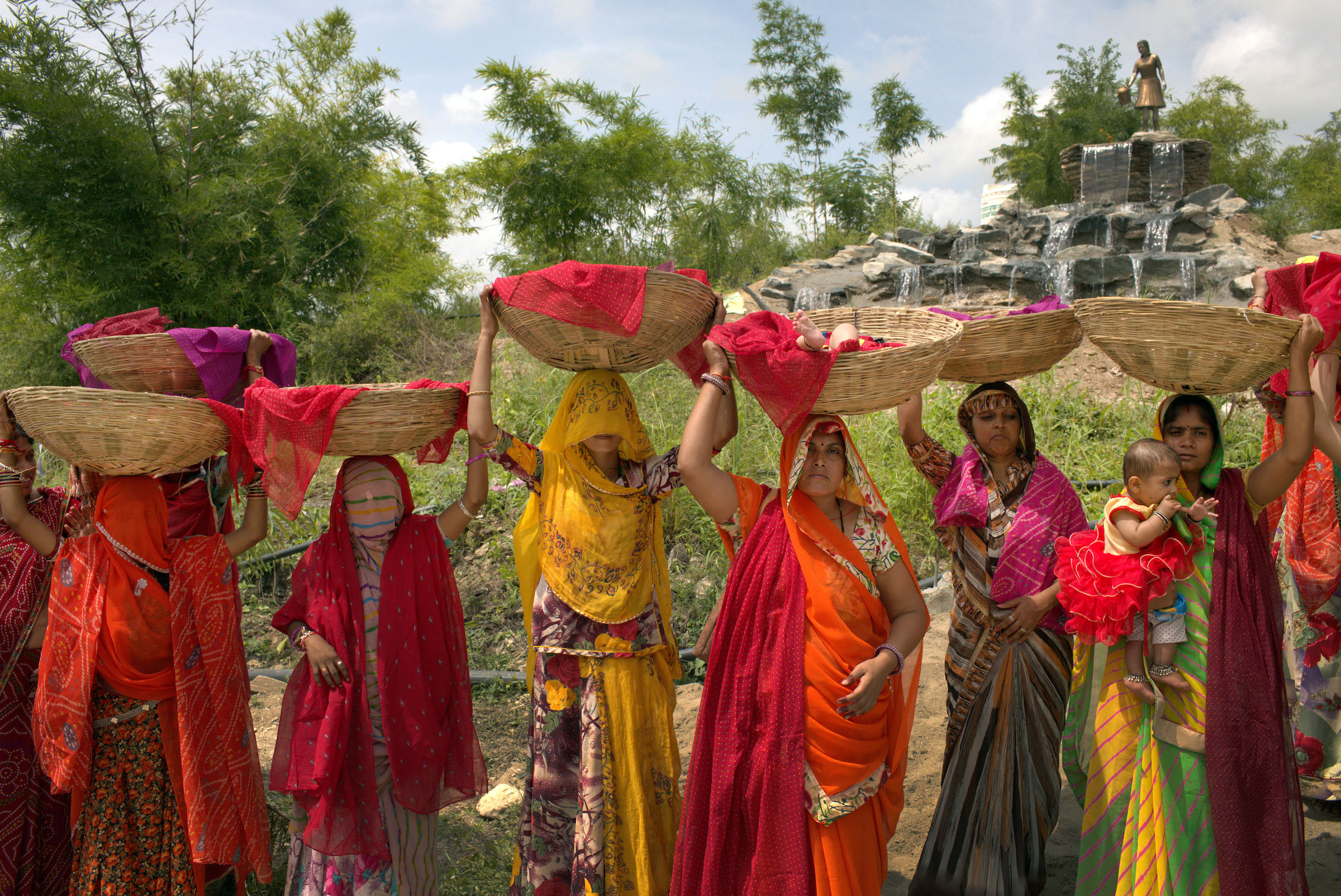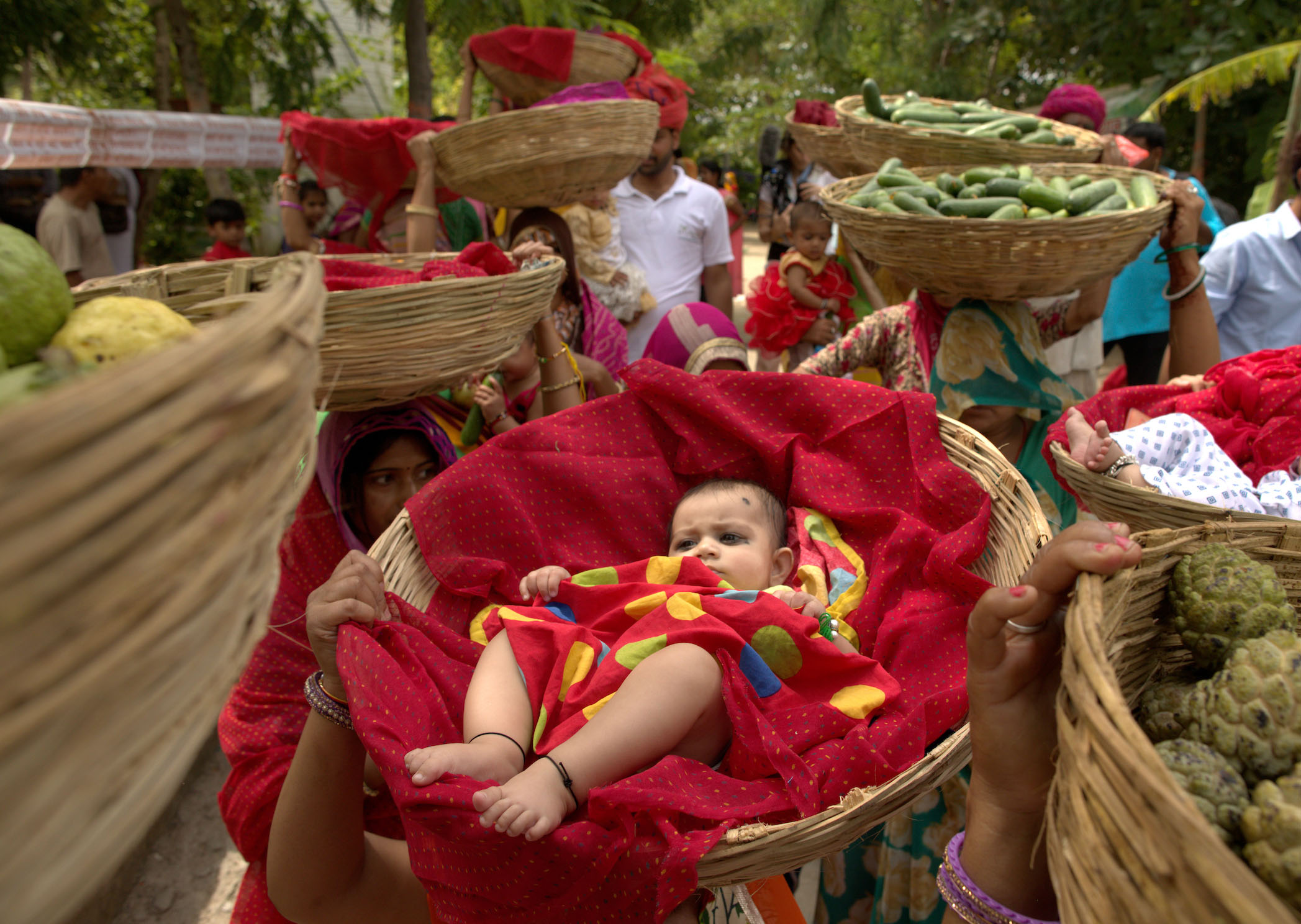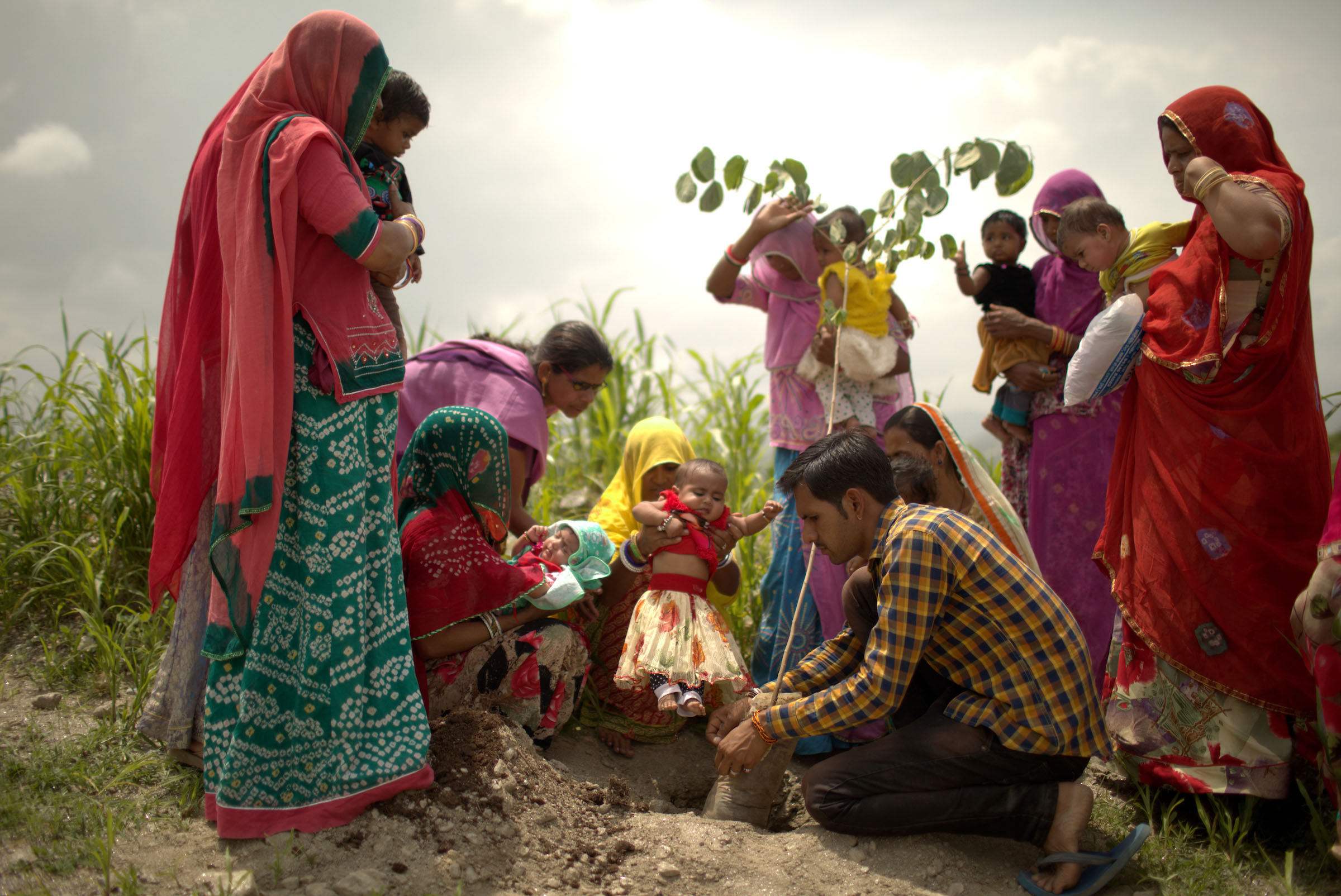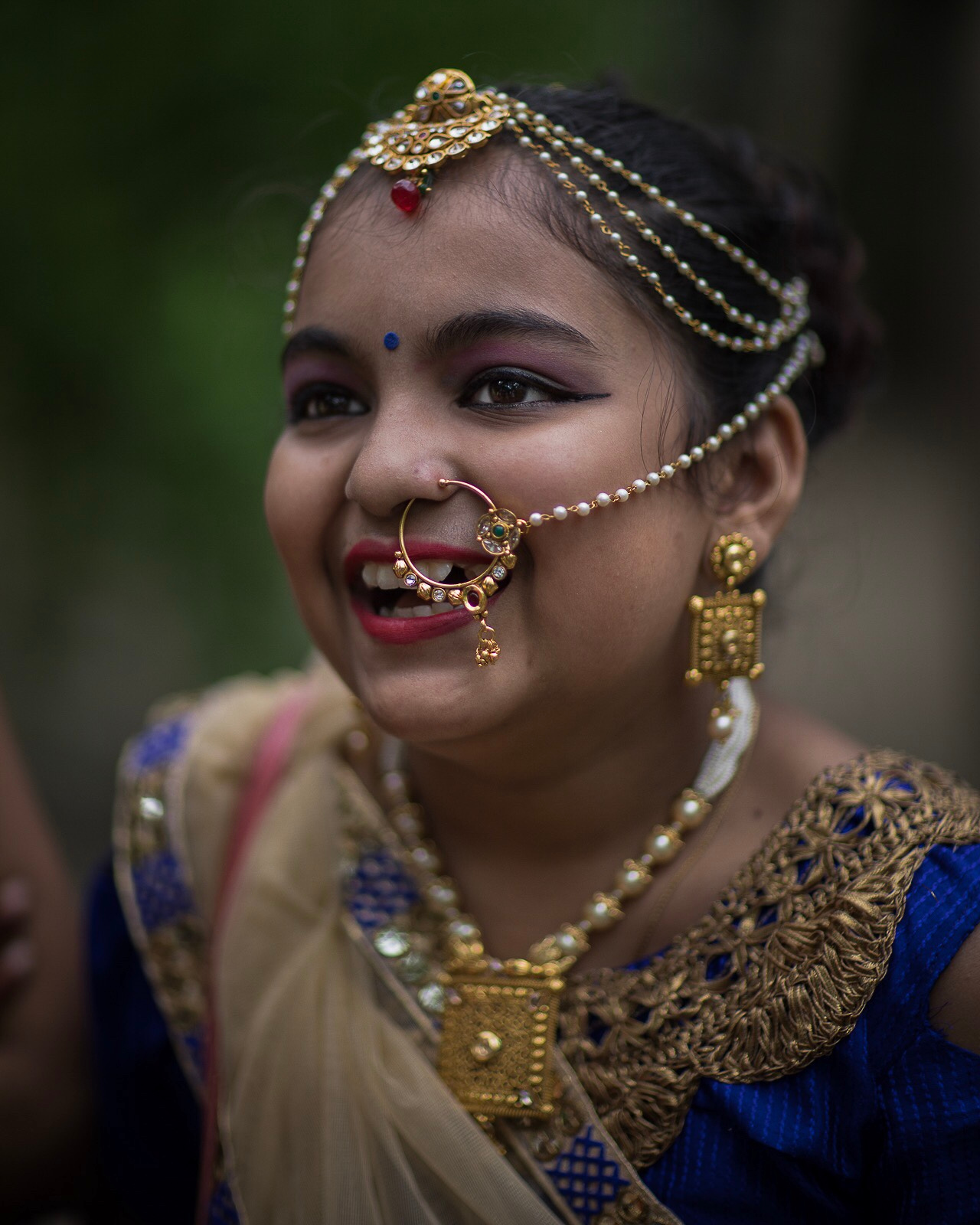JOSTLED FROM NAPTIME, the baby girls cry out from their baskets. The men have finished their speechmaking for now, and one by one, the mothers lift their daughters overhead. The infants are new to the world—all born in the last year—and each is laid like a prize on scarlet folded cotton and then cradled in round woven baskets now held high.
The women carry the baby baskets on their heads, making a procession through the watching crowds and village streets of Piplantri. Their long and flowing veils offer up a parade of pastels: rose and fuchsia, daffodil, tangerine, and lilac. Joyful Indian drums mark the tempo of the day—a day of celebration and new life.
The women halt at a bare spot near the edge of town, then set their baskets and babies onto the crumbling, thirsty soil of central Rajasthan. The first hole is dug, where, surrounded by their newborn daughters, the mothers drop a young sapling into the earth, then cover its roots.
One by one the new trees are planted— neem, rosewood, mango, and gooseberry— a future forest put back into the Earth, to grow and thrive for this newest generation and their daughters, too. For every girl child born in Piplantri, the villagers plant 111 trees—an auspicious number that signifies an open gateway or new opportunity. This year there are 60 girls born, and so the villagers are busy, digging, planting, and watering all around the edges of the community.
The women carry the baby baskets on their heads, making a procession through the watching crowds and village streets of Piplantri. Their long and flowing veils offer up a parade of pastels: rose and fuchsia, daffodil, tangerine, and lilac. Joyful Indian drums mark the tempo of the day—a day of celebration and new life.
The women halt at a bare spot near the edge of town, then set their baskets and babies onto the crumbling, thirsty soil of central Rajasthan. The first hole is dug, where, surrounded by their newborn daughters, the mothers drop a young sapling into the earth, then cover its roots.
One by one the new trees are planted— neem, rosewood, mango, and gooseberry— a future forest put back into the Earth, to grow and thrive for this newest generation and their daughters, too. For every girl child born in Piplantri, the villagers plant 111 trees—an auspicious number that signifies an open gateway or new opportunity. This year there are 60 girls born, and so the villagers are busy, digging, planting, and watering all around the edges of the community.
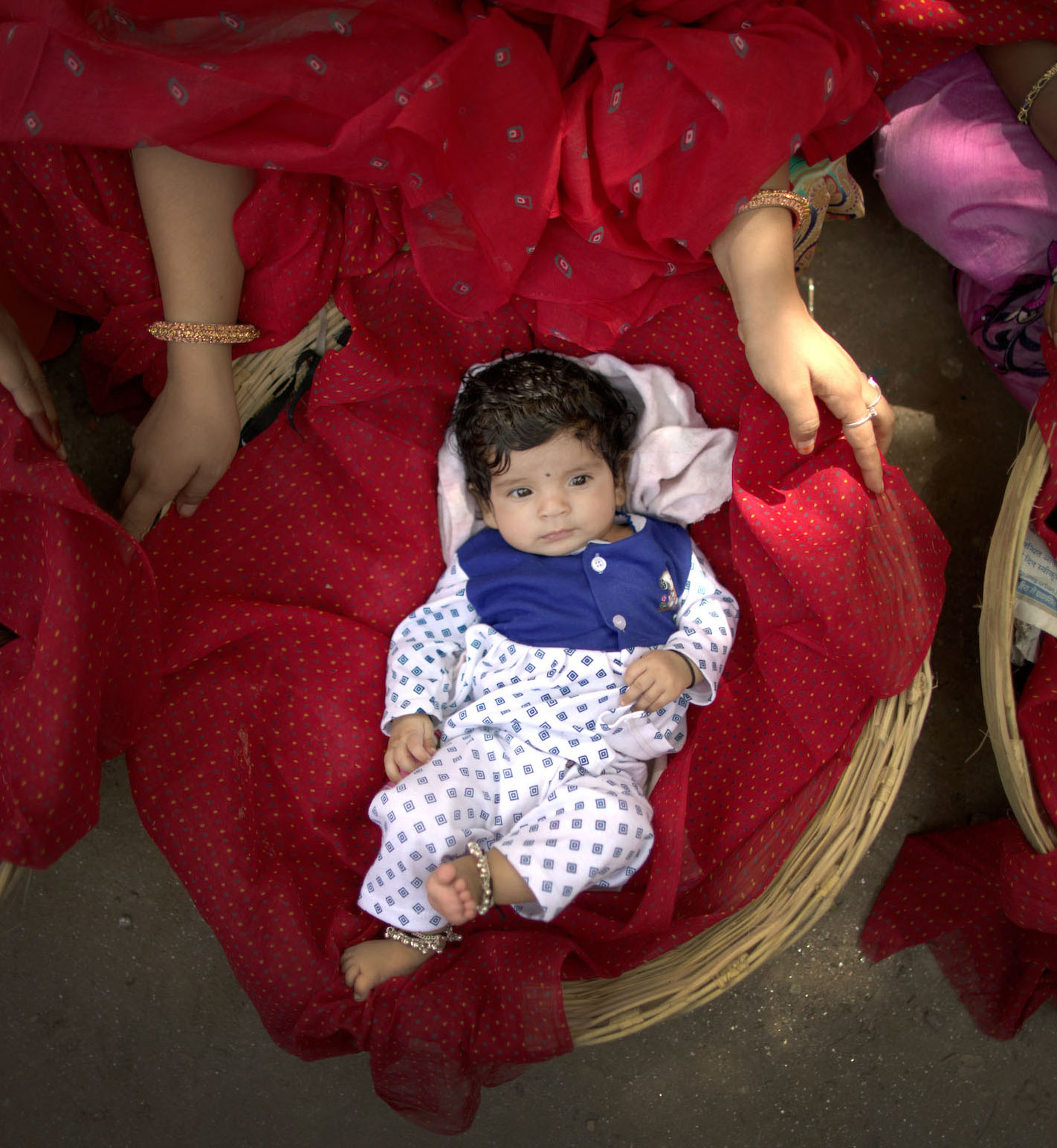
Nowhere else in India is there a celebration quite like this, commemorating every girl child while replenishing the land with trees. In this way, the people of Piplantri have taken an ancient tradition and made it their own.
It is the last day of Shraavana, the fifth lunar month in the Hindu calendar. Throughout the rest of India, it is a sacred time of fasting and festivals, celebrating the burst of green life that follows the monsoon. The holiday is Raksha Badhan, dedicated to the special love between brother and sister. Traditionally, sisters of all ages tie a rakhi—a special beaded talisman— around the wrists of their brothers. In return, the brothers offer small gifts of money to their sisters. The small exchange signifies raksha badhan, or “the bond of protection” in Sanskrit.
In Piplantri, this bond of protection was expanded between families and daughters, and between the community and the surrounding forest. For the villagers, Raksha Badhan is a time of promise and protection, both for their daughters and the environment. What was already a touching Hindu holiday has now become a day of healing and recovery for the people and the place they call home.
It is the last day of Shraavana, the fifth lunar month in the Hindu calendar. Throughout the rest of India, it is a sacred time of fasting and festivals, celebrating the burst of green life that follows the monsoon. The holiday is Raksha Badhan, dedicated to the special love between brother and sister. Traditionally, sisters of all ages tie a rakhi—a special beaded talisman— around the wrists of their brothers. In return, the brothers offer small gifts of money to their sisters. The small exchange signifies raksha badhan, or “the bond of protection” in Sanskrit.
In Piplantri, this bond of protection was expanded between families and daughters, and between the community and the surrounding forest. For the villagers, Raksha Badhan is a time of promise and protection, both for their daughters and the environment. What was already a touching Hindu holiday has now become a day of healing and recovery for the people and the place they call home.
Drastic deforestation plagues this desert region of northern India, made worse by the poverty of millions who cook their meals and boil tea over daily wood fires. Industrial mining adds its own dismal toll, stripping the ground in search of Rajasthan’s valuable white marble—the same stone that built the Taj Mahal. In time, the mines erased miles of greenery off the mountains and valleys, leaving terrific scars of bare dirt, rocks, and mining waste.
Sadly, young girls in Rajasthan face a similar spirit of destruction and exploitation. Despite India’s legal restriction of revealing the gender of a fetus to expectant parents, sex-selective abortion and infanticide remain serious problems, with live births skewing male. There are 35 million more males than females in India today, showing a blatant cultural preference towards boy children and an aversion to raising daughters. Female illiteracy, child marriage, and spousal abuse are part of this unfortunate legacy for girls and women in Rajasthan.
Piplantri’s celebration of female babies is a marked counter-trend that encourages families to raise girls with independent futures. Backing the fanfare with investment, the villagers contribute Rs21,000 (around $300, or two months’ salary) for every girl born, adding to the parents Rs10,000 contribution. This money is held in a fixed deposit bank account, which can be used by the girl only when she turns 20. The parents then sign an affidavit not to marry the girl off before the legal age of 18, ensuring that she will be able to finish school.
The long-term promise is sealed in the planting of trees, an emblem of this precious “bond of protection.” As the girls grow up, so do their trees, which they visit every year on Raksha Bandhan. As if greeting their own brothers, the schoolgirls tie beaded rakhi around the trees that were planted when they were born—a reminder of the obligation they hold to the Earth, and how the trees protect them in turn. Dressed in bright saris, the girls of Piplantri decorate their trees with garlands of orange marigolds and make symbolic offerings of coconut, flowers, and fruit.
Sadly, young girls in Rajasthan face a similar spirit of destruction and exploitation. Despite India’s legal restriction of revealing the gender of a fetus to expectant parents, sex-selective abortion and infanticide remain serious problems, with live births skewing male. There are 35 million more males than females in India today, showing a blatant cultural preference towards boy children and an aversion to raising daughters. Female illiteracy, child marriage, and spousal abuse are part of this unfortunate legacy for girls and women in Rajasthan.
Piplantri’s celebration of female babies is a marked counter-trend that encourages families to raise girls with independent futures. Backing the fanfare with investment, the villagers contribute Rs21,000 (around $300, or two months’ salary) for every girl born, adding to the parents Rs10,000 contribution. This money is held in a fixed deposit bank account, which can be used by the girl only when she turns 20. The parents then sign an affidavit not to marry the girl off before the legal age of 18, ensuring that she will be able to finish school.
The long-term promise is sealed in the planting of trees, an emblem of this precious “bond of protection.” As the girls grow up, so do their trees, which they visit every year on Raksha Bandhan. As if greeting their own brothers, the schoolgirls tie beaded rakhi around the trees that were planted when they were born—a reminder of the obligation they hold to the Earth, and how the trees protect them in turn. Dressed in bright saris, the girls of Piplantri decorate their trees with garlands of orange marigolds and make symbolic offerings of coconut, flowers, and fruit.
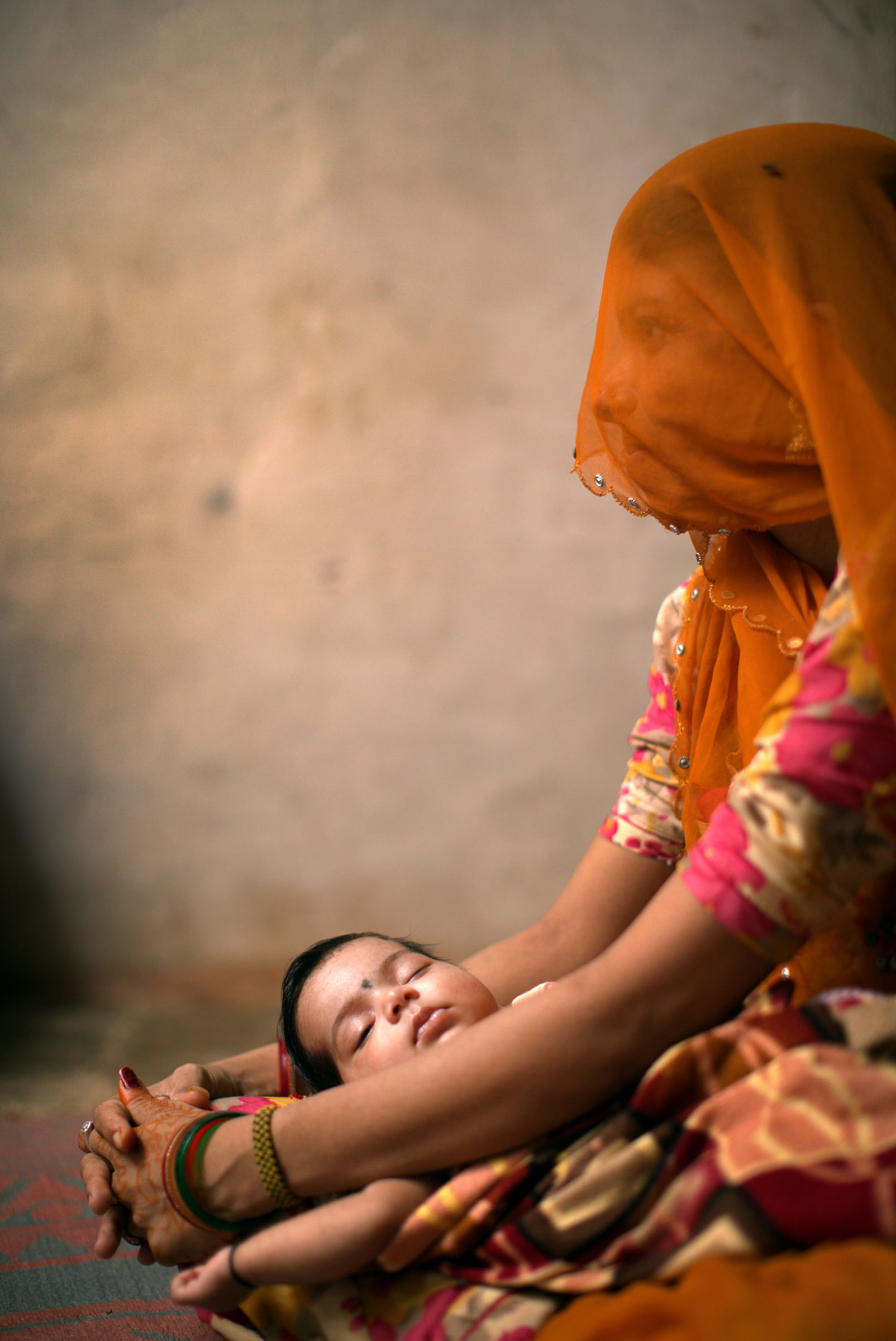
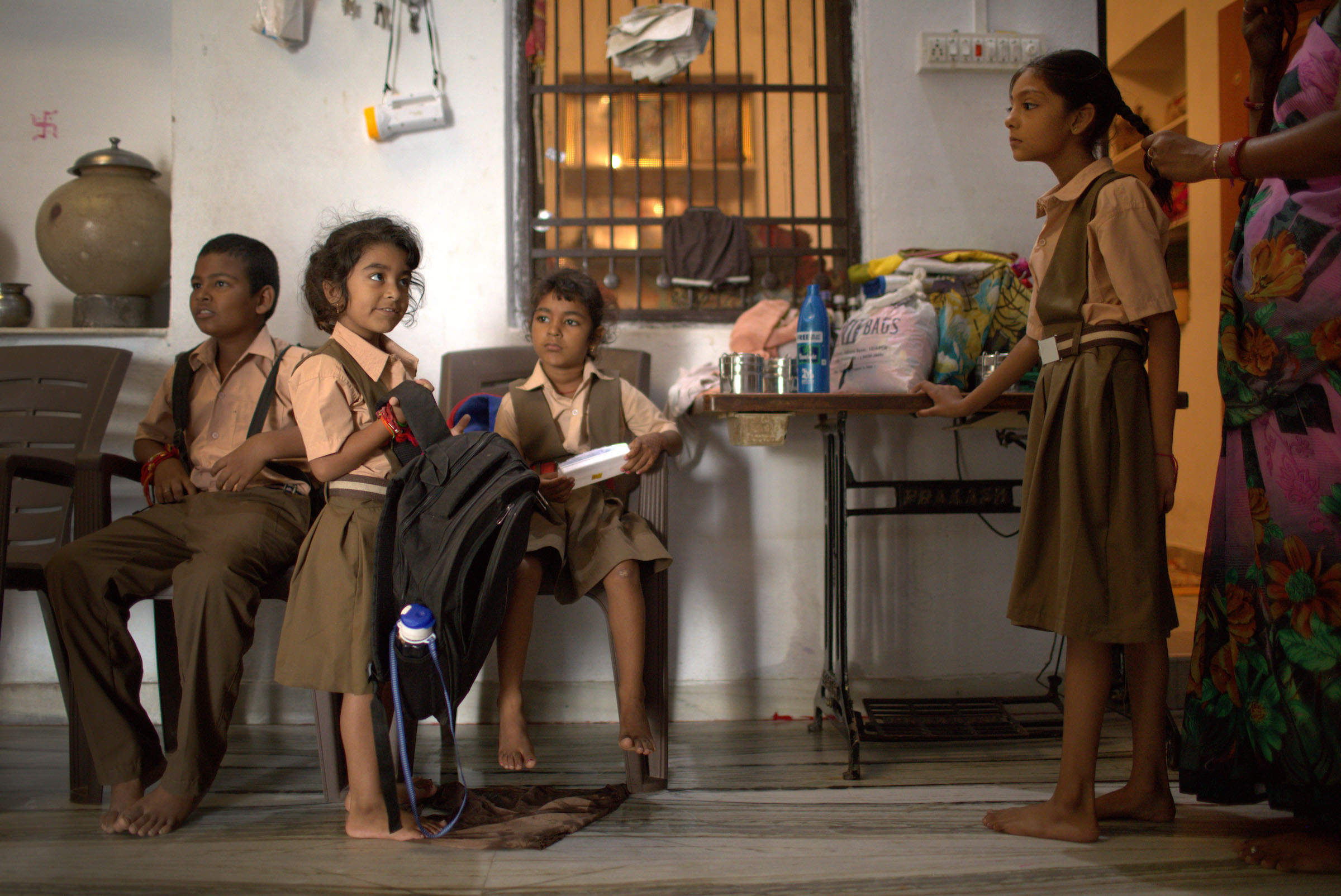
Over the past decade, the people of Piplantri have planted more than three million trees, replacing the scarred earth with a wild and verdant landscape. In every direction you look there are trees—a testament that the land can be restored, that brown can turn back to green, and that nature can triumph.
Meanwhile, the teachers of Piplantri report as many girls enrolled in school as there are boys—a significant change for good. The tradition has firmly taken root and is now part of the identity of the girls who live here. The cultural change is palpable— girls are now welcomed by families and nourished towards a more confident, storng, and independent future. Like the growing trees all around them, the daughters of Piplantri can stand taller, knowing that life feeds new life, and what we give to the earth—and to our sisters—comes back to us, even a million fold.
Meanwhile, the teachers of Piplantri report as many girls enrolled in school as there are boys—a significant change for good. The tradition has firmly taken root and is now part of the identity of the girls who live here. The cultural change is palpable— girls are now welcomed by families and nourished towards a more confident, storng, and independent future. Like the growing trees all around them, the daughters of Piplantri can stand taller, knowing that life feeds new life, and what we give to the earth—and to our sisters—comes back to us, even a million fold.
The promise of Piplantri is simple: to value every newborn girl from birth to womanhood, and to grow back the earth, one tree at a time.
CREDITS
Cinematographer
LUCY MARTENS
Photographer
JOHN STANMEYER
Editor
NACHO CORBELLA
Writer
ANDREW EVANS
Executive Producer
ANNIE GRIFFITHS
Producer
KATHERINE POTTER THOMPSON
Special thanks to the village of Piplantri, India
This film was made possible through the generous support of
The George Family Foundation

